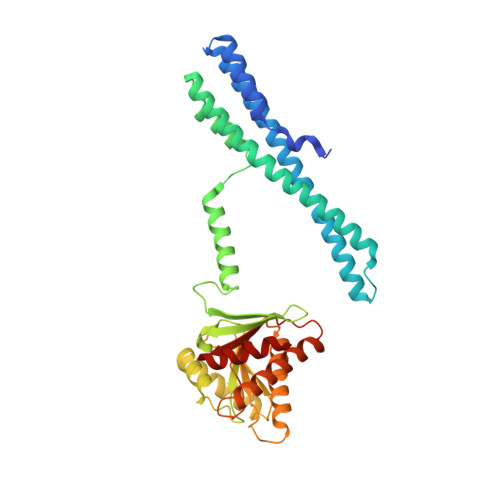Control of eukaryotic phosphate homeostasis by inositol polyphosphate sensor domains.
Wild, R., Gerasimaite, R., Jung, J.Y., Truffault, V., Pavlovic, I., Schmidt, A., Saiardi, A., Jessen, H.J., Poirier, Y., Hothorn, M., Mayer, A.(2016) Science 352: 986-990
- PubMed: 27080106
- DOI: https://doi.org/10.1126/science.aad9858
- Primary Citation of Related Structures:
5IIG, 5IIQ, 5IIT, 5IJH, 5IJJ, 5IJP - PubMed Abstract:
Phosphorus is a macronutrient taken up by cells as inorganic phosphate (P(i)). How cells sense cellular P(i) levels is poorly characterized. Here, we report that SPX domains--which are found in eukaryotic phosphate transporters, signaling proteins, and inorganic polyphosphate polymerases--provide a basic binding surface for inositol polyphosphate signaling molecules (InsPs), the concentrations of which change in response to P(i) availability. Substitutions of critical binding surface residues impair InsP binding in vitro, inorganic polyphosphate synthesis in yeast, and P(i) transport in Arabidopsis In plants, InsPs trigger the association of SPX proteins with transcription factors to regulate P(i) starvation responses. We propose that InsPs communicate cytosolic P(i) levels to SPX domains and enable them to interact with a multitude of proteins to regulate P(i) uptake, transport, and storage in fungi, plants, and animals.
- Structural Plant Biology Laboratory, Department of Botany and Plant Biology, University of Geneva, Geneva, Switzerland.
Organizational Affiliation:




















